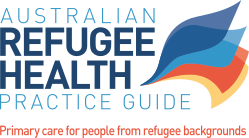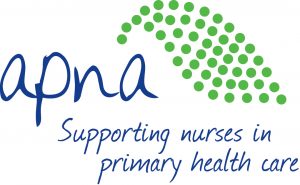Men’s health
Table of contents
Key Points
- Men and boys make up half of our humanitarian intake
- As a result of their experiences and human rights abuses, men from refugee backgrounds may have a range of health issues additional to those of men in the wider Australian community
- Identity issues following resettlement can be a significant issue
- Men may be hesitant to participate in counselling
- A cardio-vascular risk assessment may be warranted from age 35 years
Overview
Men from refugee backgrounds have often witnessed, or experienced, physical or sexual violence, including war and torture, which can result in depression, anxiety and post-traumatic stress.
Some have been combatants in war; others have been imprisoned and/or tortured because of their roles as community leaders, activists or professionals. A small number have been child soldiers or arrived as unaccompanied minors.
For many new arrival communities, the role of the man has historically been that of decision-maker, provider and ‘head of household’. Some men find it difficult to adjust to new expectations and the new freedoms of their wives and children (especially daughters) when they arrive in Australia.
Identity issues associated with loss of social and occupational status, racism and changes in gender roles can contribute to mental health problems, long-term unemployment, substance use, domestic violence and family breakdown.
The provision of services to refugee men may be limited by difficulties for some in developing trust, and reluctance to seek help or disclose a history of torture and trauma. Many men can show a reluctance to admit they are not coping, or acknowledge that post-traumatic stress may be the cause of their anxiety or their depressive or somatic symptoms. They may be hesitant to participate in counselling due to stigma associated with mental health problems, so care is needed in explaining a referral for counselling or assessment. Group approaches that are activity-based and get men talking to each other in a non-threatening environment can sometimes be a way of reducing barriers to talking about problems they are facing in adjusting to Australian life. For some, religious/spiritual guidance or rituals such as prayer may be beneficial.
Approach to care
- Some men from refugee backgrounds may prefer to see a male GP.
- A cardio-vascular risk assessment is warranted, potentially at a younger age than in Australian-born men (i.e. from 35 years of age).
- Smoking rates may be high.
- Men from refugee backgrounds, like their female counterparts, may suffer from war- and torture-related injuries, including the physical effects of sexual torture.
- Other physical health problems may include poor dental health, diseases associated with long-term exposure to the elements and poor diet, as well as chronic conditions such as hypertension, diabetes and obesity.4 5
- Bowel cancer screening (FOBT) is recommended for men 50 years and above; also, prostate cancer testing in anyone with relevant history or symptoms
Considerations
Some communities have traditionally had a lack of access to condoms, and religious or other stigma associated with their use; however teenagers and adult men may be sexually active, needing regular advice on safe sex practices as well as screening for STIs.
In some cultures, the age of consent is different from that in Australia; thus it may be advisable to discuss Australian practices and laws concerning sexual relations including age of consent. Australian laws vary between states and also according to the gender of sexual partners.
Specific Groups at Risk
- Asylum Seekers – experience high rates of depression, PTSD, psychological trauma as well as limited access to health services and social supports.
- Former Soldiers – likely exposure to extreme violence, threats to life and abuse. May include boys and adolescents forced into combat roles from a young age.
- Elderly Men – Physical and mental consequences of the refugee experience may first present in old age. Painful memories can resurface at times of illness or other stress.
Links
Australasian Men’s Health Forum
Prostate Cancer Foundation of Australia
References
1.Byrne, M. (2006). The Other 50%: Refugee Men’s Health NSW Refugee Health Service, Sydney. See also: NSW Refugee Health Service. (2009). Fact Sheet 9: Refugee Men. Retrieved from: < www.sswahs.nsw.gov.au/sswahs/refugee/pdf/Resource/FactSheet/FactSheet_09.pdf >.
2. Brownhill, S. (2014) Practitioners’ Guide to Men and Mental Health, Men’s Health Resource Kit 4, Penrith, MHIRC, University of Western Sydney
3. Johnston, V., Smith, L. & Roydhouse H. (2011). ‘The health of newly arrived refugees to the Top End of Australia: results of a clinical audit at the Darwin Refugee Health Service’. Australian Journal of Primary Health, published online December 2011. < dx.doi.org/10.1071/PY11065 >
4. Chaves, NJ., Gibney, KB., Leder, K., O’Brien, DP., Marshall, C. & Biggs, B-A. (2009). ‘Screening practices for infectious diseases among Burmese refugees in Australia’. Emerging Infectious Diseases, (15)11, 1769-72.
5. Webster, K. & Kaplan, I. (2003). ‘Refugee Women and Settlement: Gender and Mental Health’ in Allotey, P. (ed.) The Health of Refugees: Public Health Perspectives from Crisis to Settlement. Oxford University Press.
6. Mathews, B. (2011). Female genital mutilation: Australian law, policy and practical challenges for doctors. Medical Journal of Australia, 194(3), 139-141.
7. Correa-Velez, I & Gifford, S. (2011). Health and settlement among men from refugee backgrounds living in South East Queensland, La Trobe Refugee Research Centre, La Trobe University. Retrieved from: < www.latrobe.edu.au/__data/assets/pdf_file/0009/144945/Correa-Velez,-et-al.-SettleMen-WEB.pdf >.
8. Williams, N. (2011). ‘A Critical Review of the Literature: Engendering the Discourse of Masculinities Matter for Parenting African Refugee Men’. American Journal of Men’s Health, 5(2), 104-117.




